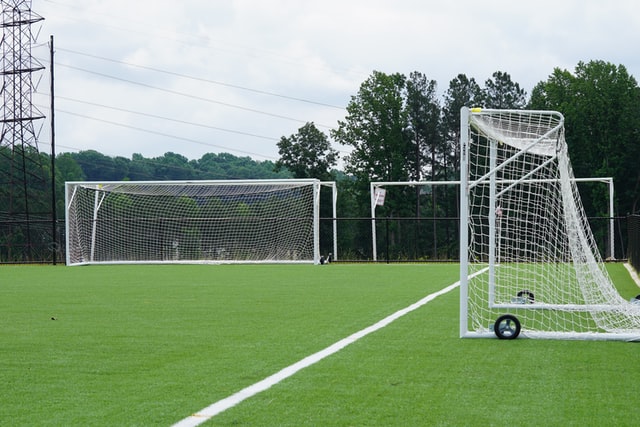Have you ever watched a soccer game and heard a commentator exclaim something on the lines of – “he’s hit the woodwork!”
If you have no idea where this term comes from, you’re certainly not alone. Below, we explain what is meant by the woodwork in soccer and dive a little deeper into the history of goalposts.
Why is it called the woodwork in soccer?
The term ‘woodwork’ in soccer refers to the frame of the goal that used to be made of Douglas fir. As a strong and widely available type of wood, most goalposts around the world were made from this material. However, in the 1970s and 1980s, soccer goals evolved, and aluminum replaced Douglas fir as the main material. However, the phrase never changed to metalwork, and the woodwork is still commonly referred to in modern-day soccer.
What does it mean to hit the woodwork in soccer?
The term ‘hitting the woodwork’ was coined by soccer commentators in the twentieth century. It simply refers to any occurrence where the ball strikes the post or the crossbar.
When a player shoots and the bar or post prevents the ball from entering the net (or indeed from sailing wide or over), it’s easy for a commentator to say, ‘it’s hit the woodwork.’
Given that lots of people used to listen to soccer on the radio, such descriptions were important as they gave fans a good idea of what was actually taking place out on the pitch.
Even though soccer posts are no longer made of wood (at least in the professional game), the phrase has stuck, and you will still hear commentators today say that the ball has struck the woodwork!
When did soccer goals change from wood to metal?
Wooden goal posts made from Douglas fir were common in the game until the 1970s and 80s. The reason that they were so popular throughout the history of the game was that wood was cheap and readily available.
Professional clubs made the switch to aluminum goalposts in the seventies, largely so the goals could be shaped, as opposed to flat and square.
It’s also worth noting that aluminum soccer goals are much stronger than wooden ones, and there were countless instances throughout history where wooden goalposts snapped due to excessive force!
One such example occurred when Sheffield United goalkeeper William ‘Fatty’ Foulke swung on a crossbar in the 1890s and snapped it in half!
Granted, it would be a long time until the soccer authorities decided to switch to metal posts, but Fatty Foulke was one in a number of goalkeepers throughout the years who broke their wooden crossbars.
What other terms are used to refer to soccer goals?
In addition to woodwork, various other phrases have been used over the years to refer to the soccer goal. Most commonly, the term woodwork is replaced with post or bar, depending on which part of the goalposts the ball hits.
Alternatively, you might hear people refer to the goal frame or simply the goal when talking about soccer posts.
Ultimately, all of the terms mean the same thing, so you don’t need to get too caught up in the semantics!
Interestingly, however, you never hear of people referring to soccer posts as the metalwork, which would actually be the most accurate description of them in their current form!
The verdict: Hitting the woodwork in soccer
Although the phrase is a little outdated, hitting the woodwork in soccer is still used by commentators today to describe when a player’s shot hits the post or bar.
When a team is clinging onto a clean sheet by parking the bus, you might find that their opponents hit the woodwork much more often than usual as they pile on the pressure!


4 thoughts on “Why are soccer posts called the woodwork? (Revealed!)”